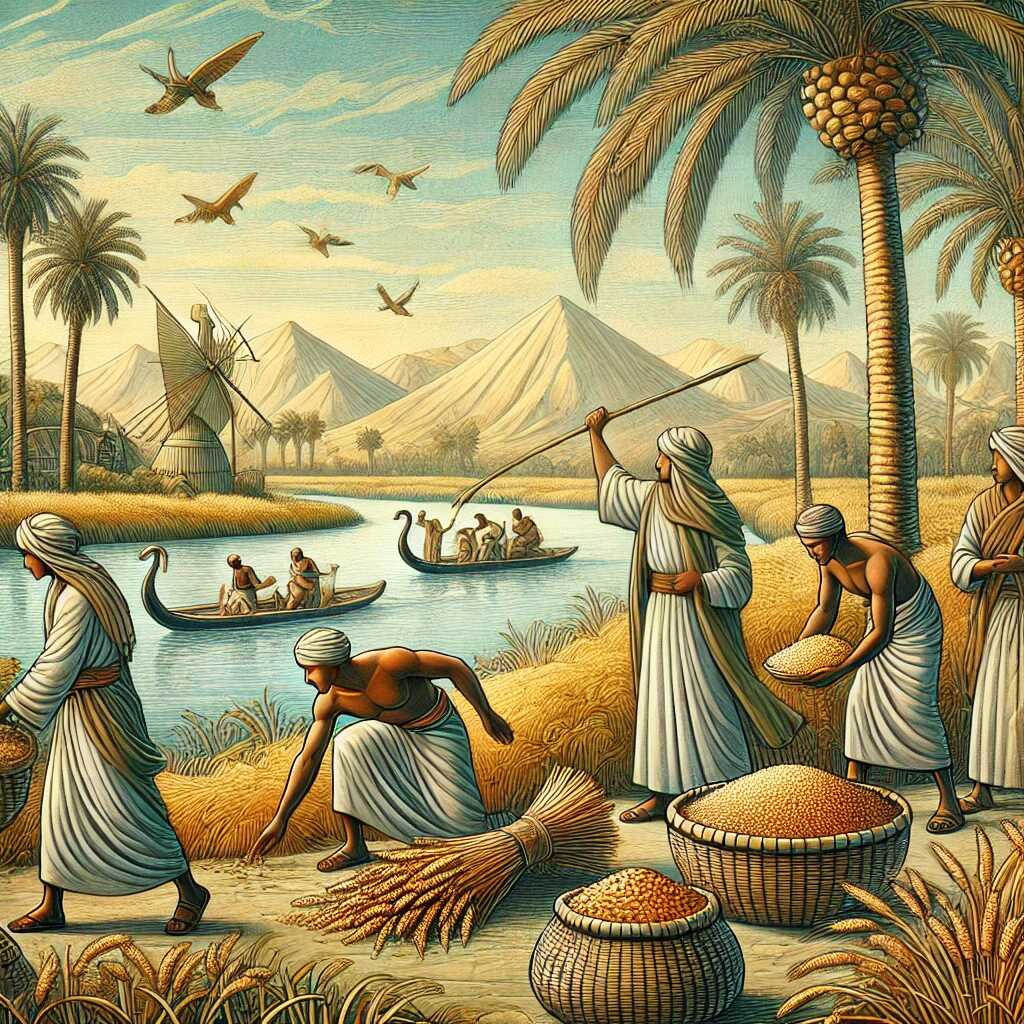
Diet in Ancient Egypt: A Feast of the Nile

The ancient Egyptians were masters of utilizing their environment, particularly the Nile River, to sustain their civilization. Their diet, shaped by geography, culture, and religion, was surprisingly varied and nutritious. From staples like bread and beer to exotic fruits and fish, the diet of the ancient Egyptians provides fascinating insights into their daily lives and societal structure.
The Breadbasket of the Nile
At the heart of the Egyptian diet was bread, made from emmer wheat or barley. These grains were ground using stone tools, producing flour that often contained grit, leading to dental issues over time. Bread came in various shapes and flavors, sometimes sweetened with honey or enhanced with spices, herbs, or dates.
Beer was another staple, brewed from barley and consumed daily by people of all social classes. It was often thick, almost like a porridge, and served as a nutritious complement to bread. Beer and bread were so essential that they were commonly offered as wages to workers, including those who built the pyramids.
Fruits, Vegetables, and Legumes
The fertile banks of the Nile provided a bounty of fruits and vegetables. Onions, garlic, leeks, and cucumbers were dietary staples, valued for their flavor and health benefits. Lettuce, which was sacred to the fertility god Min, was also widely consumed.
Fruits like dates, figs, pomegranates, and melons added sweetness to the Egyptian diet. Some wealthier Egyptians enjoyed more exotic imports, such as grapes, which were used to make wine.
Legumes, including lentils, chickpeas, and beans, were a vital source of protein, particularly for the lower classes who had limited access to meat.
Meat, Fish, and Dairy
Meat was a luxury, primarily consumed by the wealthy or on special occasions. Common meats included beef, goat, and mutton, while wild game such as ducks, geese, and antelope was also hunted. Poultry, particularly domesticated geese and ducks, was more widely available.
Fish from the Nile, such as catfish and perch, was a common protein source for all classes. It was often dried, salted, or smoked to preserve it.
Dairy products, including milk and cheese, were part of the diet, though less prominently than in other ancient cultures.
Sweet Treats and Beverages
Honey was the primary sweetener, used in desserts and religious offerings. Cakes and pastries, made with honey, dates, and nuts, were enjoyed by those who could afford them.
In addition to beer, wealthier Egyptians drank wine, which was often flavored with herbs and fruits. Water and milk were also common beverages.
Food and Religion
Food played a significant role in Egyptian religious practices. Offerings of bread, beer, fruits, and meats were made to gods and placed in tombs for the deceased. The afterlife was envisioned as a place of abundance, where food was readily available.
The diet of the ancient Egyptians reflects their ingenuity and connection to the Nile. By leveraging their natural resources, they developed a cuisine that sustained a thriving civilization for millennia. Today, their culinary traditions continue to inspire and fascinate, offering a glimpse into a world where food was not just sustenance but a celebration of life and culture.


